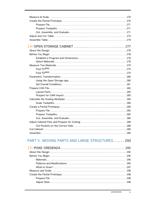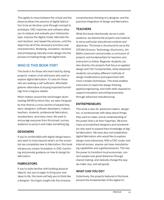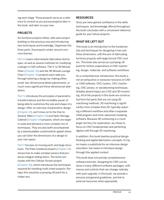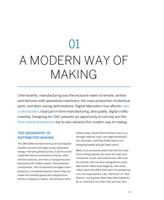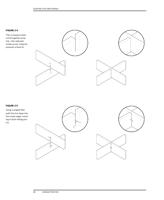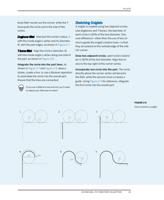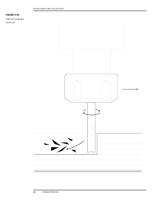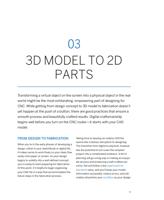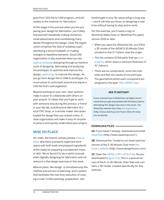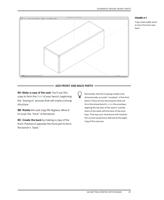
EVOLUTION FROM THE CHAIR TO ATFAB
assembly and rotational structure emerged as
we simultaneously designed several pieces that
shared common requirements. This cycle of
testing, rethinking, and improving is an exam-
ple of iteration, and is an essential part of the
design process. As we iterated upon our frame-
work through the process of designing ever
more pieces, AtFAB coalesced into a coherent
collection with its now recognizable details and
volumetric form.
Your own design framework might consist of
common details, proportions, fabrication tech-
niques, or anything that makes sense to your
project or preoccupations. However it’s organ-
ized, you will find frameworks especially useful
in streamlining the decision-making process.
When your design task grows in scale or com-
plexity, you will inevitably face numerous deci-
sions about connecting parts and joinery.
Rather than inventing a new detail or assembly
to solve every new problem, a clear, useful
framework will guide you toward consistent sol-
utions. In aggregate, these solutions are what
will help you achieve a coherence in anything
you design.
EVOLUTION FROM THE CHAIR TO
ATFAB
The 5-30 Minute Chair was followed by other
designs, with each new piece initiating the iter-
ative refinement for AtFAB’s overall language
and system of joinery, assemblies, and struc-
tures. Through this process, AtFAB became
both a furniture collection and a library of CNC
details and techniques.
FIGURE 2-36
Rotational Stools
ROTATIONAL STOOLS
The Rotational Stools in Chapter 8 are the
smallest, simplest furniture objects in the col-
lection and in this book. Each version of the
stool has two part types: a seat part and leg
part. Four identical legs are organized into a
rotational structure, which interlocks into the
seat. The stools have a substantial amount of
joinery while using a relatively modest
amount of material, which makes them ideal
for this book’s first project and introducing
basic CNC workflow.
62
DESIGN FOR CNC













